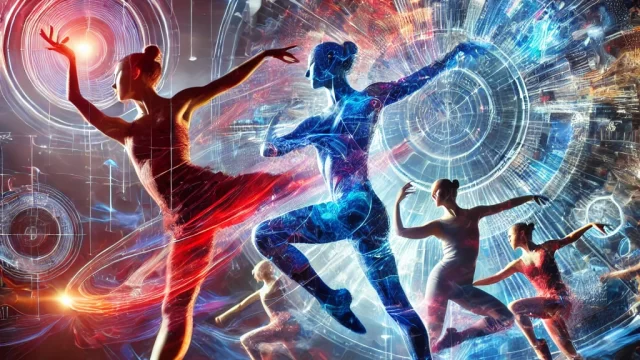Contemporary dance continues to evolve, blending traditional techniques with innovative approaches that challenge the boundaries of movement and expression. As the world changes, so does the landscape of dance, reflecting new cultural dynamics, technological advancements, and social issues. Here’s a look at the latest trends shaping the world of contemporary dance today.
1. Integration of Technology
Technology is increasingly being integrated into contemporary dance performances, enhancing both the visual and auditory experience. From projection mapping and interactive lighting to motion capture and virtual reality, technology is opening up new possibilities for choreographers and dancers.
Key Technologies in Contemporary Dance:
| Technology | Description | Example |
|---|---|---|
| Projection Mapping | Uses projectors to add layers of visuals onto surfaces or moving objects. | Used in performances by companies like Troika Ranch. |
| Motion Capture | Captures dancers’ movements to create digital avatars or interact with virtual environments. | Seen in works by Wayne McGregor. |
| Interactive Lighting | Responds to dancers’ movements, creating dynamic lighting effects. | Used in performances by Random Dance. |
2. Hybrid Forms
Contemporary dance is increasingly merging with other art forms, creating hybrid performances that blend dance with theater, film, visual arts, and even literature. This interdisciplinary approach allows artists to explore complex themes in more nuanced ways.
Examples of Hybrid Forms:
- Dance-Theater: Incorporates narrative and dramatic elements into dance, often blurring the line between dance and acting.
- Dance-Film: Combines the language of cinema with choreography, often creating site-specific works for the screen.
- Visual Arts Integration: Collaborations with visual artists to create immersive environments or interactive installations.
3. Focus on Social Issues
Many contemporary dance pieces are now addressing pressing social issues, using the medium of dance to raise awareness and provoke discussion. Themes such as climate change, gender identity, racial inequality, and mental health are being explored through powerful performances.
Social Issues in Contemporary Dance:
- Climate Change: Choreographers are creating works that highlight the impact of environmental destruction.
- Gender Identity: Dancers and choreographers explore fluidity, challenging traditional gender norms.
- Racial Inequality: Performances addressing systemic racism and cultural heritage are becoming more prominent.
4. Inclusive Practices
There is a growing emphasis on inclusivity in contemporary dance, with more opportunities being created for dancers of all abilities, body types, and backgrounds. This trend is fostering a more diverse and representative dance community.
Inclusive Practices in Dance:
- Adaptive Dance: Techniques and performances designed to include dancers with disabilities.
- Body Positivity: Emphasizing that all body types can be powerful and expressive in dance.
- Cross-Cultural Collaborations: Bringing together dancers from different cultural backgrounds to create new forms of expression.
5. Improvisation and Collaboration
Improvisation is becoming a central element in contemporary dance, with many choreographers incorporating spontaneous movement into their work. Collaboration between dancers and choreographers is also on the rise, allowing for a more fluid and organic creative process.
Improvisation and Collaboration:
| Aspect | Description |
|---|---|
| Improvisation | Dancers create movement in the moment, responding to music, environment, or other dancers. |
| Collaborative Creation | Choreographers work closely with dancers to develop material, often giving them a significant role in the creative process. |
Conclusion
Contemporary dance is constantly evolving, driven by new technologies, social movements, and interdisciplinary approaches. These latest trends highlight the diversity and innovation that continue to define the art form. As contemporary dance moves forward, it remains a powerful medium for expression, connection, and change.
